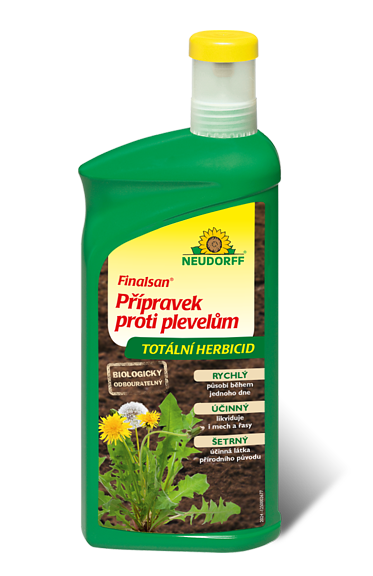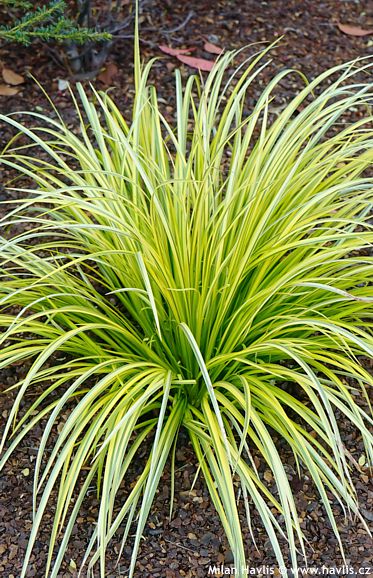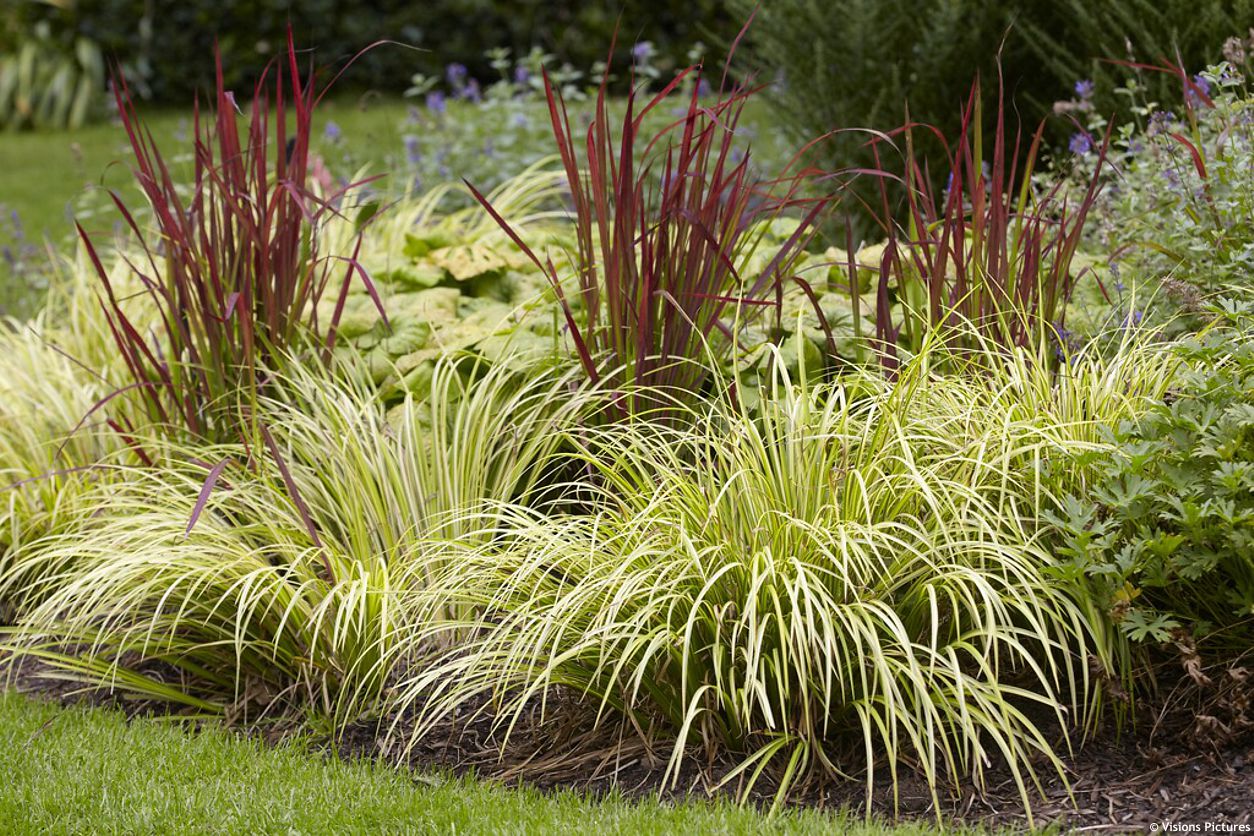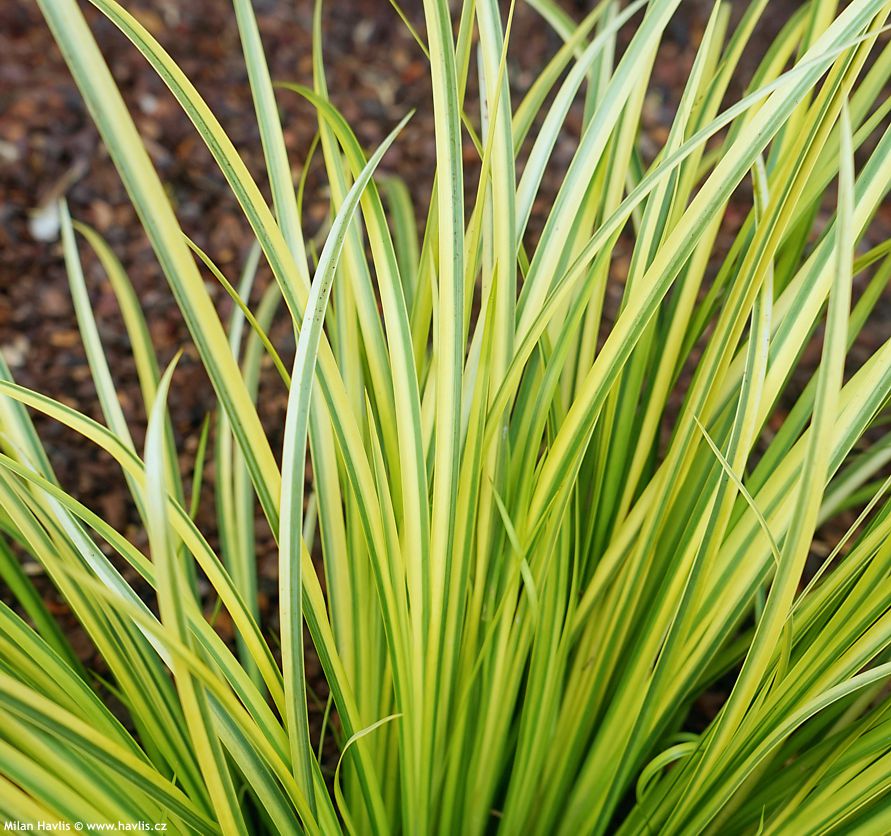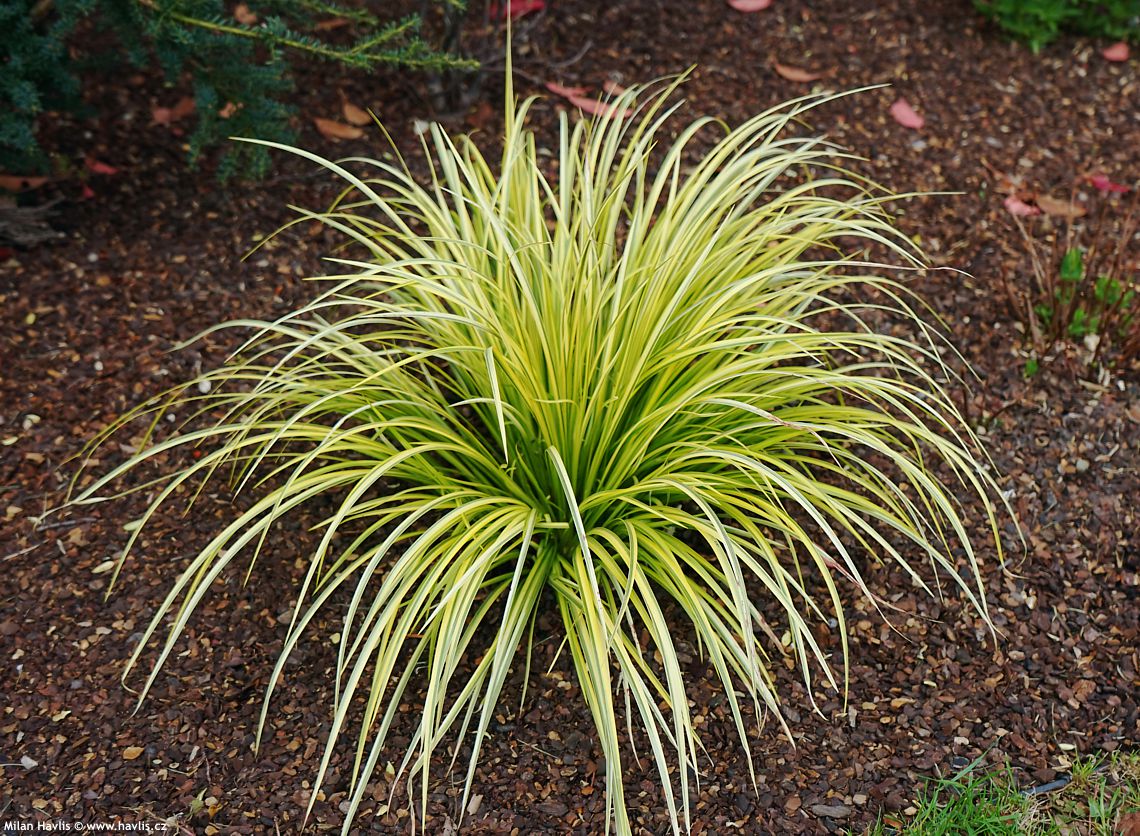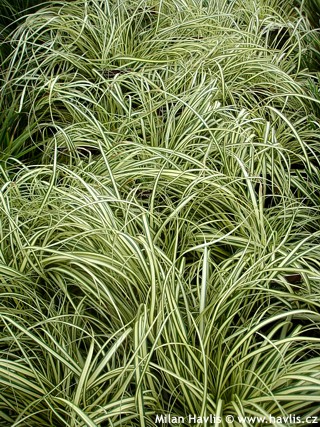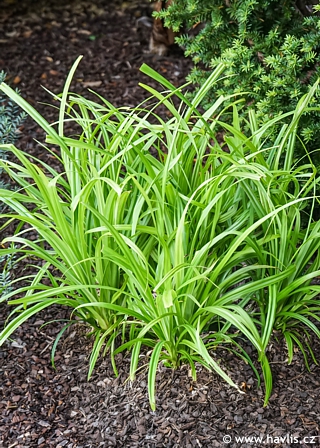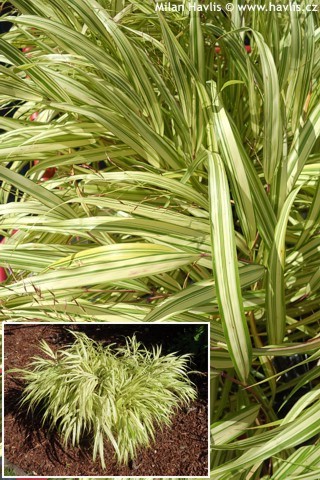Acorus gramineus 'OGON' Sweet flag
Acorus
The genus Acorus, commonly known as sweet flag, includes several species of moisture-loving perennials native primarily to Asia – from Japan and Korea to the Philippines. Although their appearance resembles grasses, they are not botanically classified as such. For a long time, they were placed in the Araceae family, but due to the absence of typical features like a spathe, they were reclassified into their own family, Acoraceae. Acorus is considered one of the most primitive genera among monocots. The first botanical description of Acorus gramineus dates back to the late 18th century, when it was described by Scottish botanist William Aiton (1731–1793), curator of the Royal Botanic Gardens at Kew. Fossil records suggest that the genus is ancient, with evidence of its existence as far back as the Paleogene period.
The species Acorus gramineus, known for its compact growth and ability to thrive in saturated soils, originates from the wet regions of East Asia, where it grows along streams, in marshes, and at the edges of rice paddies. Its leaves are narrow, sword-shaped but soft to touch, and release a sweet fragrance when crushed – hence the common name sweet flag. In traditional East Asian cultures, it was valued not only as an ornamental plant but also for its medicinal properties, especially its rhizomes, which were traditionally used to support cognitive function, relieve digestive issues, and calm the mind and spirit. In Japan, sweet flag was planted around homes as a protective charm, and in Korea, it was used in herbal baths.
If you love the character of ornamental grasses, you’ll likely fall for this – to be botanically correct – non-grass 😊. Its name is Ogon and it is a cultivar of sweet flag that shines like a jewel thanks to its leaf colouration. It immediately draws attention with its bright yellow leaves adorned with fine olive-green stripes, arching gracefully like ribbons of water. Its habit is low, forming dense clumps about 30 cm tall, slowly expanding through rhizomes. The leaves are aromatic, semi-evergreen, and remain decorative in mild winters. The flowers are inconspicuous, greenish-yellow, appearing from spring to summer, but of no ornamental value. Compared to the species, ‘Ogon’ stands out for its leaf colour and more compact growth. The original breeder is not clearly documented, but the cultivar appeared in Japanese gardens in the latter half of the 20th century. The name ‘Ogon’ means “gold” in Japanese, perfectly capturing its appearance.
In garden compositions, ‘Ogon’ acts as a bright accent that can illuminate even darker corners. It’s ideal for pond edges, rain gardens, or as a border along moist pathways. Interestingly, the clump does not thicken from the center – similar to irises, the centre remains slightly open while new leaves emerge around the edges. This growth pattern gives the plant an airy, fountain-like look, making it easy to pair with other species. For example, it creates harmonious plantings with Japanese iris, annual honesty (Lunaria annua), or cardinal flower (Lobelia cardinalis), offering both aesthetic appeal and ecological compatibility. In containers, it can serve as a striking solitary specimen, provided the soil remains consistently moist (keep the saucer full of water). In naturalistic landscapes, it helps stabilize banks and prevent erosion.
Caring for sweet flag is straightforward if basic conditions are met. It prefers moist to wet soil, it is rated FACW - for facultative wetland, ideally of neutral to slightly acidic pH (6–7). It thrives in full sun, where its golden foliage reaches peak vibrancy. It tolerates partial shade, but in overly dark locations, its coloor may fade and growth become sparse. In hot climates, afternoon shade helps protect the leaves from scorching. The plant is not suitable for long-term cultivation in dry containers but excels in consistently moist environments. It is resistant to diseases, pests, rabbits and deers. No toxicity or allergenic effects are known. To maintain vigour, it’s advisable to divide and replant it every few years. Its cold hardiness reaches down to -29 °C (USDA zone 5).
Last update 26-10-2025
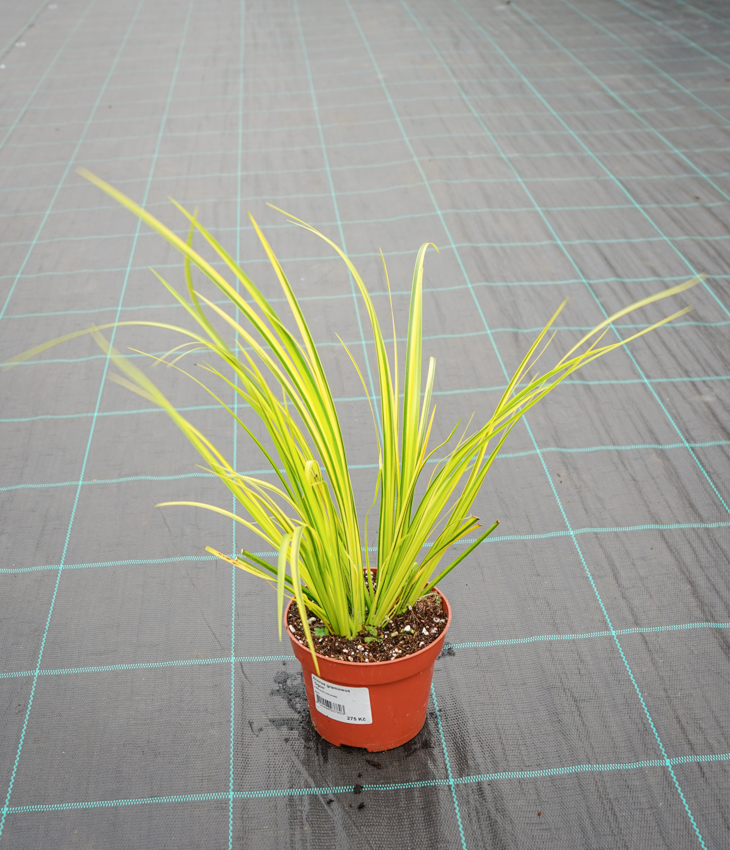
233,75 Kč

416,5 Kč
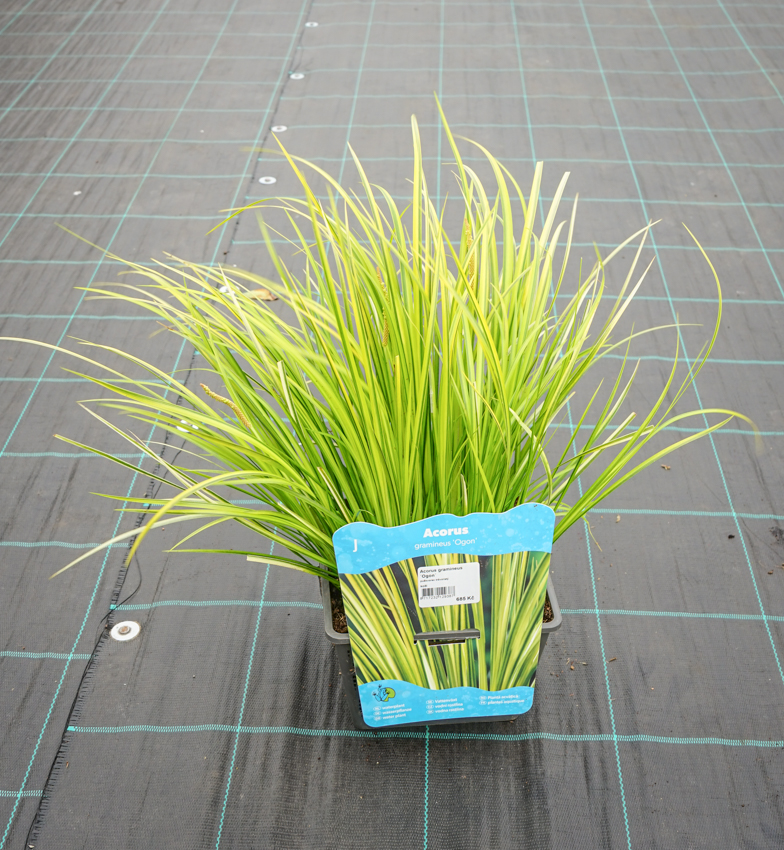
582,25 Kč
Goods are shipped all over Europe. For Russia and U.K. and for further details please read about SHIPPING OPTIONS HERE.
Are you interested in a serious discount for orders NOV-FEB? Check your options here.
THE PRICES INCLUDE VAT of 15%. For quick conversion you can use 1 CZK = approx. 0.04 EUR
- STANDARD QUALITY - Plants of this group are 1st class quality with number of branches and overall density adequate to their size and age, considering they were container grown.
- DE LUXE QUALITY - This label guarantees a luxurious quality of manually selected plants that, compared to their height and age, are exceptionally dense and beautiful.
- EXTRA - These plants are usually mature and bigger specimens with exceptional overall appearance.
- STANDARD (as described in the plant form) means a tree with a trunk of 190-210 cm and a crown at the top, unless specified differently. The commercial size for trees is their girth measured in the height of 1m from ground.
- HOBBY - These plants are of the same quality as our standard-quality plants but younger and therefore cheaper.
- SHRUB - a woody plant with branches growing bushy from the ground level.
- HALF-STANDARD or MINI-STANDARD - a small tree with shorter trunk, its size is usually specified.
- FEATHERED - These are trees with branches growing already from the base of the trunk and up along the stem.
- GRASSES and PERENNIALS - Sizes given usually read the diameter of the pot or the clump, as specified.






























